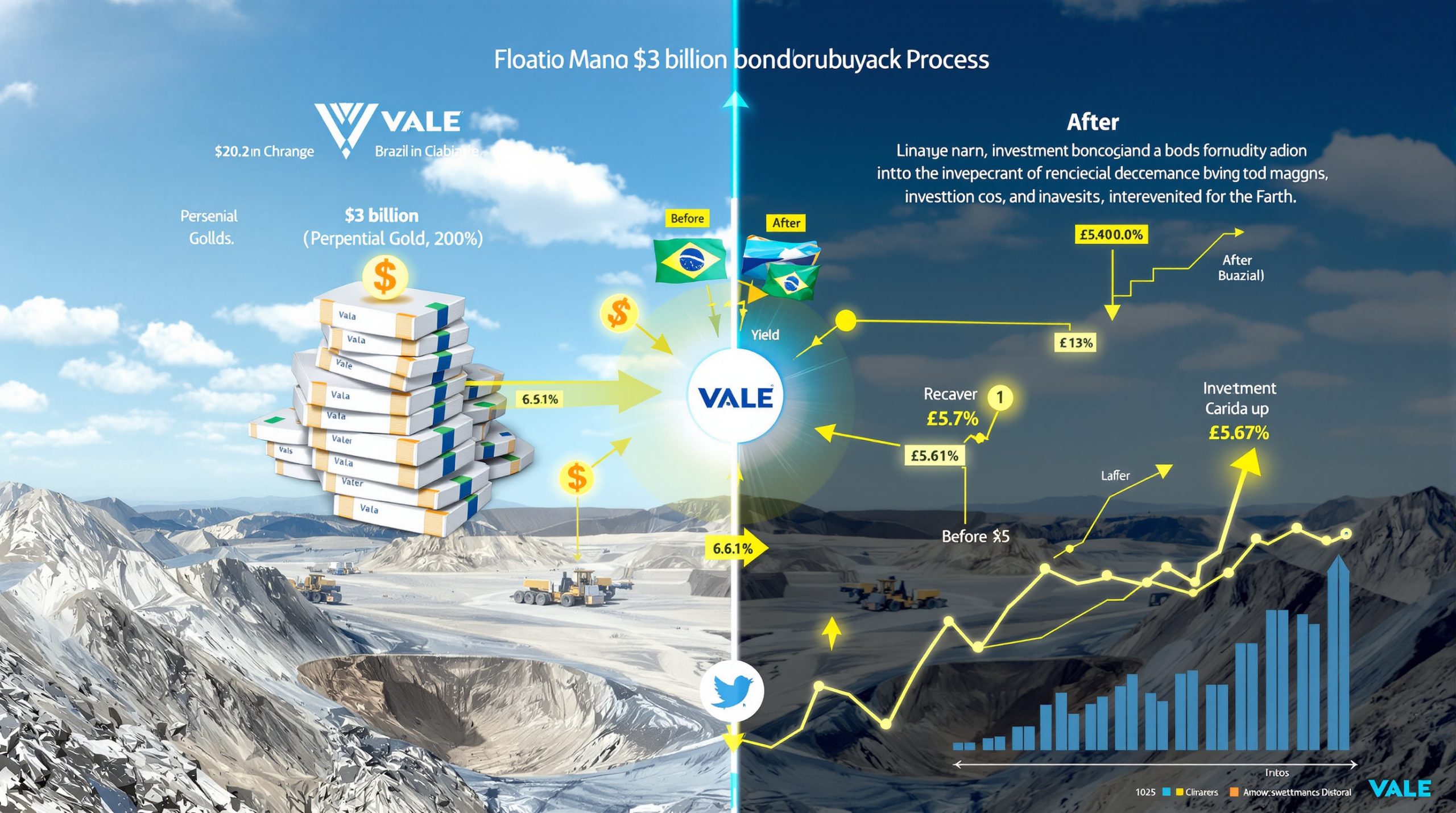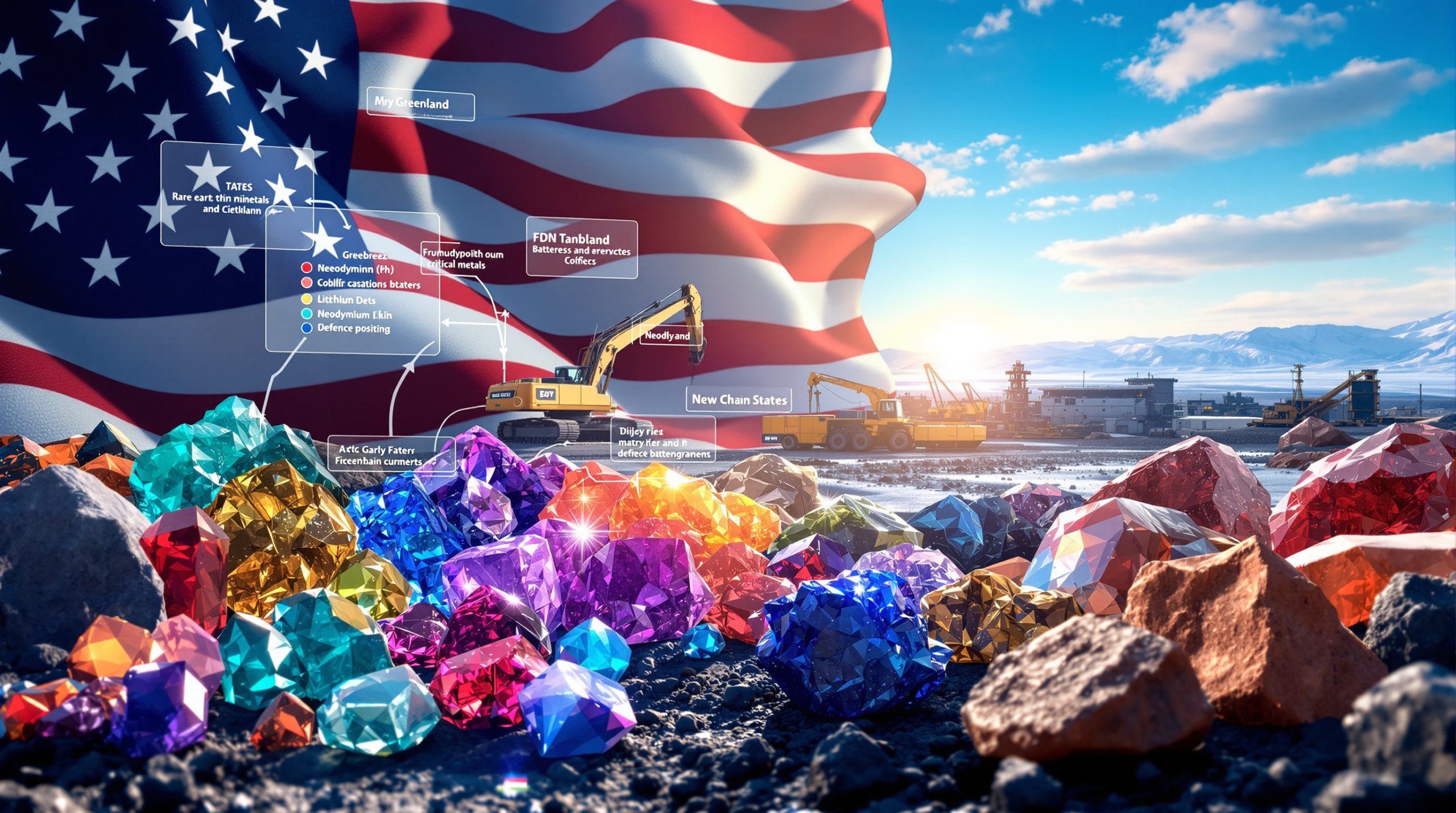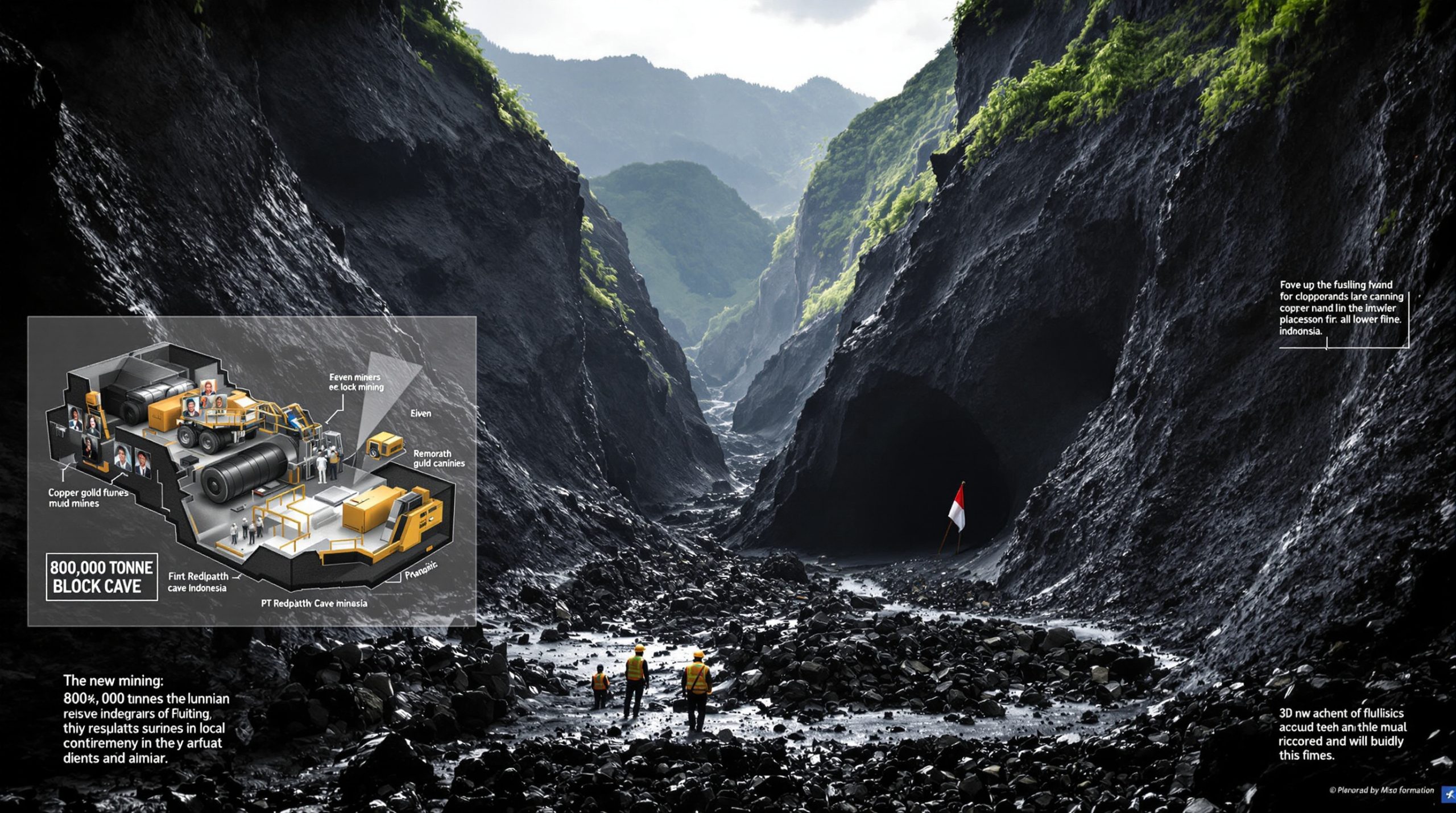Argentina's Mineral Treasure: Unveiling the $4.1 Trillion Underground Wealth
Argentina sits on an extraordinary treasure trove of mineral resources that positions it as one of the world's most promising mining destinations. The country's rich geological diversity spans from lithium-rich salt flats in the northwest to copper-gold porphyry deposits in the Andes Mountains. This remarkable natural endowment represents a potential economic engine that could transform Argentina's financial landscape for generations to come.
Recent comprehensive assessments by government authorities have revealed the staggering scale of these resources. When valued at current market prices, the valuation of Argentina's mineral reserves and resources of lithium, copper, gold, silver, and uranium are estimated to be worth approximately $4.1 trillion. This valuation represents the theoretical market value if all these minerals could be extracted and sold at today's prices.
Breaking Down Argentina's $4.1 Trillion Mineral Portfolio
Argentina's mineral wealth is distributed across several key resources that are increasingly critical to global technology and clean energy transitions. The Secretary of Mining's updated database (September 2025) provides the most comprehensive assessment to date of the country's mineral endowment.
Lithium Resources: The White Gold Revolution
Argentina possesses approximately 216.5 million tonnes of lithium carbonate equivalent (LCE), combining both resources (197.9 million tonnes) and reserves (18.6 million tonnes). At current prices of around $9,386 per tonne, this represents a theoretical value of approximately $2.03 trillion.
The country forms part of the renowned "Lithium Triangle" alongside Bolivia and Chile, which collectively holds over 50% of the world's lithium resources. Further Argentina lithium insights show that the country's lithium is predominantly found in brine deposits across the provinces of Catamarca, Jujuy, and Salta.
What distinguishes Argentina's lithium resources is not just their quantity but their quality. The country's high-altitude salt flats benefit from exceptional evaporation rates and relatively high lithium concentrations, making them potentially more economical to develop than some competing resources globally.
Copper Deposits: Electrification's Critical Metal
With 133.1 million tonnes of copper (116 million in resources and 17.1 million in reserves), Argentina holds substantial copper wealth valued at approximately $1.3 trillion at current prices of $9,774 per tonne. This makes copper Argentina's second most valuable mineral resource.
Major Argentina copper projects like Josemaría, Taca Taca, and El Pachón position Argentina to become a significant global copper producer in the coming decades. What's particularly notable is that many of Argentina's copper deposits remain relatively undeveloped compared to neighboring Chile, suggesting substantial growth potential.
The copper deposits are primarily located in the Andes Mountains along Argentina's western border, with significant concentrations in San Juan, Catamarca, and Salta provinces. Many of these deposits feature copper-gold porphyry systems that offer the economic advantage of valuable by-products.
Precious Metals: Gold and Silver Holdings
Argentina's precious metals holdings are equally impressive:
-
Gold: 172 million ounces (138.4 million in resources, 33.6 million in reserves), valued at approximately $609 billion at $3,539 per ounce
-
Silver: 4.33 billion ounces (3.84 billion in resources, 492.7 million in reserves), valued at approximately $177 billion at $40.8 per ounce
These precious metals are distributed across several provinces, with notable concentrations in San Juan, Santa Cruz, and Catamarca. The Veladero and Cerro Negro operations represent some of Argentina's most productive gold mining projects, while silver is often produced as a by-product of both gold and base metal operations.
The current bull market in precious metals, particularly silver's 14-year price highs, has significantly increased the valuation of these resources. Recent gold price analysis shows that silver's critical role in solar panel manufacturing has elevated its strategic importance beyond traditional investment and industrial uses.
Strategic Uranium: Energy Security Asset
The country possesses approximately 49,250 tonnes of uranium (36,483 tonnes in resources, 12,767 tonnes in reserves), valued between $6.5 billion and $7.6 billion at current prices of $59.6 per pound.
This strategic resource supports Argentina's nuclear energy program and energy sovereignty ambitions. With three operational nuclear plants and plans for expansion, domestic uranium resources provide a potential pathway to energy security. Recent uranium market volatility has highlighted the importance of secure supply chains, with the Sierra Pintada deposit in Mendoza Province representing one of the country's most significant uranium resources.
What Would It Take to Develop These Resources?
Transforming Argentina's vast mineral endowment from geological potential to productive mines requires enormous capital, technical expertise, and time. The scale of investment needed reflects both the opportunity and challenge of developing these resources.
Investment Requirements Analysis
Developing Argentina's mineral wealth would require massive capital investment. Industry analysts estimate that putting all these projects into production would demand between $318 billion and $676 billion in capital expenditure (CAPEX). This range is derived from typical capital intensity metrics for each mineral:
| Mineral | CAPEX Range (per unit/year production capacity) |
|---|---|
| Lithium | $15,000–25,000 per tonne |
| Copper | $12,000–35,000 per tonne |
| Gold | $5,000–10,000 per ounce |
| Silver | $50–400 per ounce |
| Uranium | $21–50 per pound |
These estimates don't include additional costs like working capital, interest during construction, environmental mitigation, or contingencies for macroeconomic fluctuations.
Theoretical Production Scenarios
If Argentina were to develop these resources over a 20-year timeframe (extracting 1/20th of the inventory annually), the country could theoretically generate around $206 billion in annual mineral exports. This figure represents gross export value without accounting for production costs, taxes, or royalties.
Such a scenario would transform Argentina into one of the world's largest mineral exporters, potentially rivaling major mining nations like Australia, Chile, and Canada. However, practical constraints make this accelerated development timeline highly unlikely.
A more realistic development scenario would involve:
- Prioritizing projects based on economic viability, infrastructure accessibility, and social license
- Phased development focusing initially on expansion of existing operations
- Sequential development of new projects with the most favorable economics
- Gradual ramp-up of production capacity in line with market demand and capital availability
What Challenges Must Be Overcome?
Despite the enormous potential value, Argentina faces significant challenges in developing its mineral resources. These challenges span technical, infrastructure, regulatory, and social dimensions.
Infrastructure and Logistics Constraints
Many of Argentina's mineral deposits are located in remote regions with limited infrastructure. Developing these resources would require significant investments in:
-
Transportation networks: Many copper and gold deposits are located in mountainous areas with limited accessibility. Road improvements, rail extensions, and port facilities would require billions in investment.
-
Power generation and transmission: Mining operations are energy-intensive. Argentina's power grid would need substantial expansion and reinforcement to support large-scale mining development.
-
Water supply and management: Water availability is a critical constraint, particularly in arid regions where many deposits are located. Innovative water conservation technologies and management systems would be essential.
-
Communications infrastructure: Remote operations require reliable communications for safety, operations, and data management.
The Andean regions, where many copper and precious metal deposits are located, present particular challenges due to high altitudes (over 4,000 meters in some cases), extreme weather conditions, and difficult terrain.
Technical and Operational Challenges
Extracting these minerals at scale presents numerous technical challenges:
-
Lithium production complexities: Traditional evaporation methods require 12-18 months of processing time and face efficiency challenges. Direct lithium extraction (DLE) technologies promise higher recovery rates and smaller footprints but remain commercially unproven at large scale.
-
Complex metallurgy: Many copper deposits contain challenging mineralogy that reduces recovery rates and increases processing costs. The presence of arsenic in some deposits creates additional technical and environmental challenges.
-
High-altitude operations: Working at elevations above 4,000 meters presents both human safety and equipment challenges, requiring specialized approaches to development.
-
Water-mineral balance: In lithium brine operations, the delicate hydrogeological balance between freshwater and brine resources requires sophisticated modeling and management.
Regulatory and Social License Considerations
Perhaps the most significant challenges are regulatory and social:
-
Provincial authority over mineral resources: Argentina's federal structure grants provinces authority over natural resources, creating a complex regulatory landscape with varying requirements and approaches across regions.
-
Environmental permitting complexity: Environmental impact assessment processes can take years to complete, with uncertain outcomes and frequent legal challenges.
-
Community acceptance variability: Social attitudes toward mining vary significantly across provinces. While San Juan and Santa Cruz have established mining sectors, provinces like Chubut have enacted restrictions on certain mining activities.
-
Water usage concerns: Competition for water resources in arid regions has fueled opposition to mining developments, particularly for water-intensive operations like traditional lithium extraction.
The experience of projects like Agua Rica in Catamarca and Navidad in Chubut illustrates how regulatory and social license challenges can delay or prevent development of otherwise economically viable resources.
How Would Full Development Transform Argentina's Economy?
The potential economic impact of developing Argentina's mineral resources extends far beyond the direct value of mineral production. A strategic approach to development could create lasting economic benefits across multiple dimensions.
Macroeconomic Impact Projections
If developed strategically, Argentina's mining sector could become a major economic pillar. Current mining exports are around $5 billion annually, but industry projections suggest this could grow to $18-20 billion by 2030 with focused development of key projects.
The economic impact extends beyond direct export revenues:
-
Foreign exchange generation: Mining exports would significantly improve Argentina's foreign currency earnings, helping address persistent balance of payments challenges.
-
Fiscal contributions: Tax revenues, royalties, and other fiscal contributions could provide substantial resources for public investment and debt service. Mining jurisdictions like Chile and Peru have used mining revenues to fund sovereign wealth funds and social development programs.
-
Economic diversification: Developing the mining sector would help diversify Argentina's economy beyond agricultural exports and services, providing resilience against commodity price cycles.
A fully developed mining sector could potentially contribute 8-12% of GDP, compared to approximately 1% today, based on comparisons with countries like Chile and Peru that have mature mining sectors.
Employment and Skills Development
Mining development creates employment through multiple channels:
-
Direct employment: Modern mining operations require skilled technical personnel, from engineers and geologists to equipment operators and maintenance specialists. Based on global benchmarks, full development could create 100,000-150,000 direct mining jobs.
-
Indirect employment: Mining operations require extensive supply chains, including equipment suppliers, maintenance services, logistics providers, and professional services. The employment multiplier typically ranges from 3-5 indirect jobs for each direct mining position.
-
Induced employment: The spending power of mining employees and suppliers creates additional economic activity in retail, hospitality, construction, and other sectors.
The quality of mining employment is particularly valuable, with wages typically 30-50% above national averages and extensive training opportunities. Mining development would create strong incentives for educational institutions to develop technical training programs aligned with industry needs.
What Policy Framework Would Maximize Benefits?
Argentina's ability to capture the full potential of its mineral wealth depends significantly on the policy framework governing development. Finding the right balance between investment attraction and value capture for the nation is critical.
Balancing Investment Attraction and Value Capture
Developing an optimal policy framework requires balancing the need to attract investment with ensuring appropriate benefits for Argentina:
-
Fiscal stability provisions: Mining projects have multi-decade lifespans and require billions in upfront investment. Fiscal stability mechanisms provide investors with certainty while ensuring reasonable government returns.
-
Streamlined permitting processes: Environmental and regulatory reviews must maintain high standards while eliminating unnecessary delays and duplications that can add years to project timelines.
-
Infrastructure co-investment models: Public-private partnerships for infrastructure development can reduce initial capital burdens while creating shared facilities that benefit broader economic development.
-
Local content and workforce development: Policies that encourage development of local supply chains and workforce skills maximize economic spillover effects while improving project economics.
The RIGI Framework and Mining Investment
Argentina has implemented the RIGI (Régimen de Incentivo a las Grandes Inversiones) framework to attract large-scale investments, including in mining. This regime offers:
- Tax stability for 30 years
- Reduced corporate income tax rates (25%)
- Accelerated depreciation benefits
- Reduced dividend withholding taxes
- Customs benefits for capital goods imports
Several major mining projects have already applied for RIGI benefits, signaling increased investor interest. According to Argentinian mining exports data, Rio Tinto's Rincón lithium project in Salta, with a committed investment of $2.72 billion, represents one of the largest beneficiaries of the RIGI framework to date.
The impact of RIGI on mining investment will be significant, but must be complemented by provincial-level frameworks that address permitting efficiency and local benefit-sharing arrangements.
How Does Argentina Compare to Other Mining Jurisdictions?
Argentina's mineral potential places it among the world's most resource-rich nations, but its development history has lagged behind comparable jurisdictions. Understanding this gap provides insights into Argentina's competitive position and potential development pathways.
Global Ranking of Mineral Endowments
Argentina's mineral endowment places it among the world's most resource-rich nations:
- For lithium, Argentina ranks third globally in resources after Bolivia and Chile
- In copper, while not at the scale of Chile or Peru, Argentina's undeveloped deposits represent significant future potential
- Gold and silver resources are substantial by global standards
However, Argentina has historically captured less investment than its resource potential would suggest, largely due to macroeconomic instability, regulatory uncertainty, and infrastructure limitations.
In the Fraser Institute's Annual Survey of Mining Companies, Argentina has typically ranked in the middle tier of mining jurisdictions globally, with significant provincial variations. San Juan and Santa Cruz provinces consistently rank higher than other Argentine provinces in investment attractiveness.
Benchmarking Development Pathways
Looking at comparable jurisdictions provides insight into potential development pathways:
-
Chile's copper sector development: Chile transformed its copper resources into a national economic pillar through a combination of state participation (via Codelco) and private investment. Its production-based sovereign wealth funds have helped manage commodity cycles and fund development priorities.
-
Australia's diversified mining development: Australia has successfully developed a diversified mining sector across multiple commodities and regions, supported by world-class geological surveys, efficient permitting, and innovative mining technology development.
-
Canada's balanced regulatory approach: Canada has maintained a strong mining sector while implementing robust environmental and social standards, with particular emphasis on indigenous consultation and benefit-sharing arrangements.
Each of these models offers lessons for Argentina, though the country's federal structure and specific geological characteristics will require a tailored approach.
What Are the Environmental Considerations?
Sustainable development of Argentina's mineral wealth requires addressing numerous environmental considerations. Modern mining practices offer solutions to traditional environmental challenges, but require careful planning and implementation.
Water Management Imperatives
Water management represents perhaps the most critical environmental challenge, particularly in Argentina's arid mining regions:
-
Lithium brine operations: Traditional evaporation-based lithium extraction consumes significant water through evaporation. In the water-scarce regions of Argentina's Lithium Triangle, this creates potential conflicts with other users and ecosystems.
-
Direct Lithium Extraction (DLE) potential: Emerging DLE technologies promise to reduce water consumption by up to 90% compared to traditional methods. Companies like Rio Tinto and Lake Resources are pioneering these approaches in Argentina.
-
Water recycling in conventional mining: Modern copper and gold operations can achieve water recycling rates exceeding 80% through closed-circuit designs and tailings dewatering technologies.
-
Watershed protection: Comprehensive watershed management approaches that consider all users and maintain ecological functions are essential for sustainable development.
Energy and Carbon Considerations
Mining operations are energy-intensive, but renewable energy integration offers both environmental and economic benefits:
-
Renewable energy potential: Argentina's northwestern mining regions have exceptional solar resources, with irradiation levels among the highest globally. Wind resources in Patagonia offer similar opportunities for southern operations.
-
Mine electrification: The transition from diesel to electric equipment reduces both emissions and operating costs while improving underground air quality and safety.
-
Hybrid power systems: Integrated renewable-plus-storage systems with conventional backup can provide reliable power for remote operations while reducing carbon footprints.
Several mining companies operating in Argentina have already announced renewable energy initiatives. Livent Corporation's operations in Catamarca, for example, have incorporated solar power to reduce the carbon intensity of lithium production.
What Is the Future Outlook for Argentina's Mining Sector?
Argentina's mining sector stands at an inflection point, with significant potential for transformation in both the near and long term. The pathway from current activity levels to full potential development will depend on policy choices, market conditions, and project execution.
Short-Term Developments (2025-2030)
In the near term, several key developments are likely:
-
Lithium expansion: The lithium sector will see the most immediate growth, with several projects in late-stage development or early production. Production could increase from approximately 40,000 tonnes LCE currently to 150,000-200,000 tonnes by 2030.
-
Copper project advancement: Major copper projects like Josemaría and Taca Taca will progress through feasibility and permitting stages, potentially reaching production late in this period.
-
Gold production stability: Established gold operations will continue production, with moderate growth from expansion projects and new smaller-scale developments.
-
Export growth: Mining exports could potentially reach $10-15 billion annually by 2030, representing significant growth from current levels but still well below theoretical potential.
Long-Term Potential (Beyond 2030)
The longer-term outlook depends on policy continuity and investment decisions made in the coming years:
-
Copper development acceleration: If multiple world-class copper projects advance to production, Argentina could establish itself as a significant copper producer, potentially reaching annual production of 1-2 million tonnes by 2040.
-
Lithium leadership: Scaled lithium production could position Argentina among the top three global suppliers, potentially surpassing 400,000 tonnes LCE annually with implementation of advanced extraction technologies.
-
Downstream integration: Development of mineral processing capabilities could capture additional value from mineral resources. Lithium chemical production and copper refining represent the most immediate opportunities.
-
Mining services ecosystem: A mature mining sector would support development of specialized mining technology and services companies capable of competing regionally and globally.
The realization of this potential depends critically on maintaining policy continuity across political cycles, addressing infrastructure bottlenecks, and earning social license through demonstrated benefits and environmental performance.
Understanding Argentina's Mineral Valuation: Key Questions Answered
What's the difference between mineral resources and reserves?
Mineral resources are concentrations of minerals with reasonable prospects for eventual economic extraction. They're classified by increasing geological confidence as Inferred, Indicated, or Measured.
Mineral reserves are the economically mineable portion of Measured and Indicated resources. They include diluting materials and allowances for losses during mining, and are classified as either Probable or Proven reserves.
The progression from resources to reserves requires increasing levels of study, including preliminary economic assessments, pre-feasibility studies, and detailed feasibility studies. This explains why reserve figures are always smaller than resource figures – they represent only the portion of resources that detailed studies have confirmed can be economically extracted.
How reliable is the $4.1 trillion valuation figure?
The $4.1 trillion valuation represents a theoretical maximum value based on current mineral prices and total resource inventories. Several factors affect its reliability:
-
Price volatility: Mineral prices fluctuate significantly. Lithium carbonate prices, for example, have ranged from $5,000 to over $70,000 per tonne in recent years.
-
Economic recovery limitations: Not all resources will ultimately be economically extractable due to geological complexities, metallurgical challenges, and infrastructure constraints.
-
Development timeline realities: The valuation doesn't account for the time value of money across multi-decade development timeframes.
-
Market absorption capacity: Bringing all resources to market simultaneously would significantly impact global prices, potentially reducing realized values.
This figure is best understood as an order-of-magnitude estimate of Argentina's mineral endowment rather than a precise economic valuation. It represents potential value that would be realized over many decades through strategic development.
Could Argentina really produce $206 billion in mineral exports annually?
The theoretical scenario of $206 billion in annual exports (based on extracting 1/20th of resources annually for 20 years) faces several practical limitations:
-
Capital constraints: The required investment of $318-676 billion would be difficult to mobilize simultaneously. Global mining capital expenditure typically ranges from $80-150 billion annually across all regions and commodities.
-
Infrastructure limitations: Current transportation, energy, and water infrastructure couldn't support such rapid scaling. Major infrastructure development typically requires 5-10 years for planning and construction.
-
Market absorption: Such production volumes would likely impact global prices. Argentina's theoretical annual lithium production under this scenario would exceed current global demand.
-
Technical and regulatory constraints: Permitting, engineering, and construction timelines make such rapid development impractical. Major mining projects typically require 7-12 years from discovery to production.
A more realistic scenario would see gradual development of selected high-quality projects over many decades, with annual exports potentially reaching $20-40 billion at peak development.
How does environmental sustainability factor into these valuations?
The theoretical valuation doesn't account for environmental costs or constraints, which are increasingly important considerations:
-
Water availability: In water-stressed regions, sustainable extraction limits may reduce recoverable resources or increase costs through water conservation technologies.
-
Carbon pricing: Evolving climate policies may impose additional costs on energy-intensive operations, potentially reducing economic viability of lower-grade resources.
-
Biodiversity protection: Areas of high ecological sensitivity may be excluded from development or require more costly extraction and mitigation approaches.
-
Social license requirements: Community benefit-sharing and impact mitigation costs are increasingly material to project economics but aren't reflected in simple resource valuations.
Modern mining operations incorporate these factors into project design and economic assessments from early stages. The mineral exploration insights reveal that the mining industry's evolving sustainability practices are creating new pathways to balance resource development with environmental and social priorities.
Conclusion: Realizing the Potential of Argentina's Mineral Wealth
Argentina stands at a pivotal moment in its resource development journey. The country possesses mineral wealth that could transform its economic trajectory, but realizing this potential requires addressing complex challenges across technical, financial, regulatory, and social dimensions.
The $4.1 trillion valuation of Argentina's mineral reserves represents not just an impressive number but a generational opportunity. Transforming this geological endowment into sustainable economic development will require:
- Strategic prioritization of development opportunities based on economic viability, infrastructure availability, and social license
- Policy frameworks that balance investment attraction with value capture for Argentine society
- Infrastructure development that serves both mining needs and broader economic development
- Environmental approaches that protect critical ecosystems while enabling responsible resource development
- Social engagement that ensures communities share in the benefits of resource development
With thoughtful development approaches that learn from both successes and failures globally, Argentina has the potential to establish itself as a major player in global mineral markets while creating lasting benefits for its citizens.
Want to Discover the Next Major Mining Opportunity?
Stay ahead of the market with Discovery Alert's proprietary Discovery IQ model, delivering instant notifications when significant ASX mineral discoveries are announced. Explore our dedicated discoveries page to understand how major mineral finds like Argentina's $4.1 trillion resource potential can translate into exceptional investment returns.




